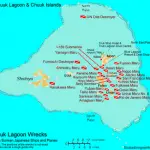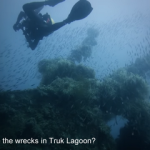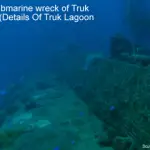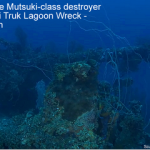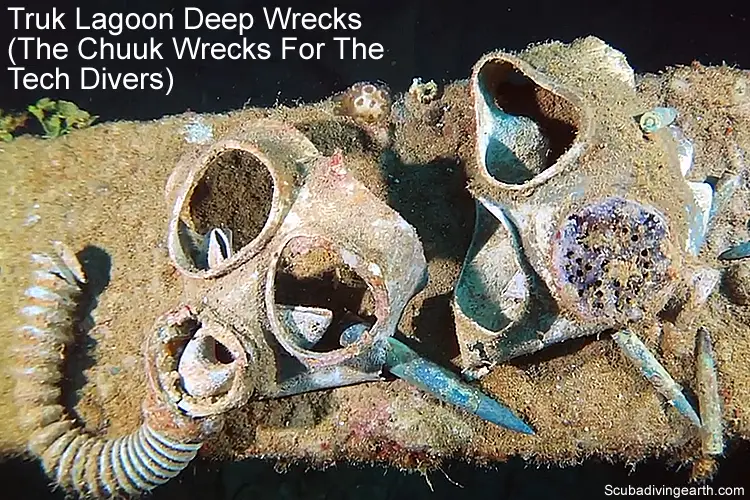
Deep sea wrecks don’t come any better than the deep wrecks of Truk Lagoon
If you’re a technical diver and love to dive the deepest of wrecks, look no further than Truk or Chuuk Lagoon. Getting to Chuuk Lagoon is not the easiest journey. But it’s a ‘bucket-list‘ dive destination worth the trip for wreck lovers.
How deep are Truk Lagoon Wrecks? Most of the Truk Lagoon wrecks are in excess of 40 metres (131 feet) deep. Many Truk Lagoon wrecks are deeper at depths of 50 and 60 metres (164 and 197 feet) and more. These deeper Truk Lagoon wrecks are ideal for technical divers who want to explore this World War II ghost fleet of Japanese ships.
The best way to dive Truk Lagoon is by a scuba diving liveaboard. You can check the latest and best deals on Truk Lagoon liveaboards using the following window:
How deep are Truk Lagoon wrecks – Where to begin?
When considering the Truk Lagoon deep wrecks, it’s difficult to know how to decide on ‘how deep is deep?’ For some, scuba diving deeper than 20 metres (66 feet) is deep. Whereas for others, diving deeper than 30 metres (100 feet) is deep.
So for me to decide on what is a deep dive for the purposes of this article, I decided to go with those wrecks that are in excess of PADI’s recreational dive limit of 40 metres (131 feet).
Whilst the starting depth of some wrecks on my article on ‘How deep are the wrecks in Truk Lagoon‘ begin in shallower dive depths that may be less than the recreational dive limit, for the purpose of this article I’m using the deepest depth of that wreck.
If you take a look at the table included in the above article, the last column labelled ‘profile’, the wrecks that are labelled ‘45M‘ and above are what I consider are the Truk Lagoon deep wrecks.
Diving Truk Lagoon by liveaboard:
Truk Lagoon dive liveaboards table
This list of Truk Lagoon liveaboards is in descending customer rating order, followed by Scuba Diving Luxury Rating (SDE Lux Rating, see below), so the liveaboards with the highest customer rating and the best SDE lux rating will be at the top of the list. If you want to change the list order, use the “Sort by” dropdown below.
| Discover Liveaboard | Customer Rating | SDE Lux Rating % | Flexible Booking | Dive Courses | Dietary Requirements | Nitrox | Gear Rental | |
|---|---|---|---|---|---|---|---|---|
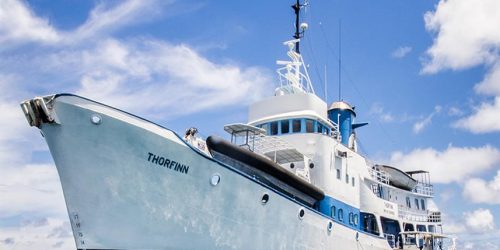 | Review: SS Thorfinn; Book: SS Thorfinn | 8.8 | 88% | YES | YES | YES | YES | YES |
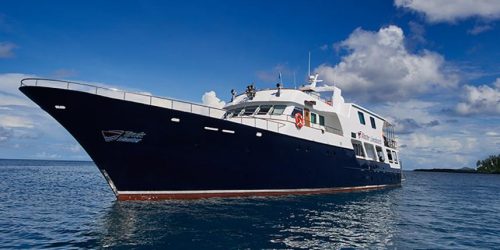 | Review: MV Truk Master; Book: MV Truk Master | 7.9 | 65% | YES | NO | YES | YES | YES |
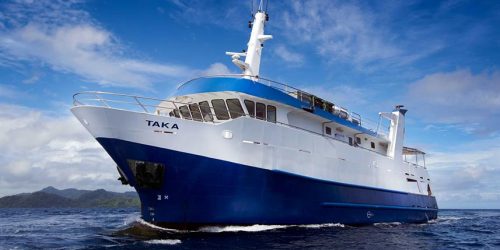 | Review: MV Pacific Master; Book: MV Pacific Master | 0 | 56% | YES | YES | YES | YES | YES |
The Scuba Diving Earth Luxury Rating (SDE Lux Rating) is explained on each liveaboard review when you click the “Discover Liveaboard” link, and is my own Liveaboard Luxury Rating I’ve assigned to all liveaboards. Choosing between liveaboards is helped by customer scores, and if you get stuck choosing between two or three liveaboards, where each one has a high customer score out of 10, you can use the SDE Luxury Rating to help narrow down your choice.
Think about it like using Booking.com when searching for the best hotel. Booking.com also use a customer score where each customer rates hotels out of 10. This is similar to the liveaboard customer rating, which is also rated out of 10. But let’s say you only like to stay in hotels rated 8 and above on Booking.com, but you also want the hotel to have WIFI or parking, or to have a swimming pool etc. The features each hotel has is usually secondary to the score out of 10.
This is a total of 12 wrecks, which are as follows:
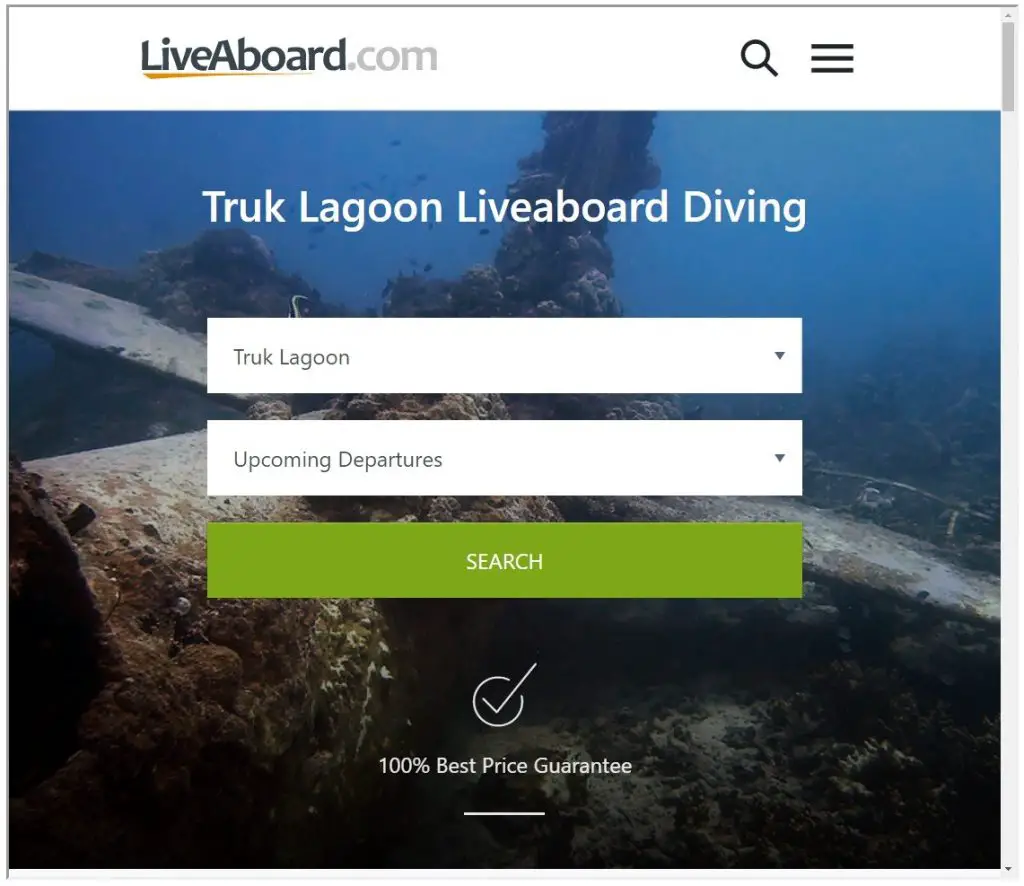
Truk Lagoon deep wrecks in excess of 40 metres (131 feet)
The table below is an extract from the main list of depths of the Truk Lagoon wrecks.
- Matsutani Maru or Shotan Maru – 37-46 metres deep (120-150 feet) (45M wreck).
- Nippo Maru – 37-47metres deep (120-155 feet) (45M wreck).
- Hoki Maru – 24-50 metres deep (80-165 feet) (50M).
- Ojima Tug – 46-50 metres deep (150-164 feet) (50M).
- Seiko Maru – 23-49 metres deep (75-160 feet) (50M).
- Aikoku Maru – 24-64 metres deep (80-210 feet) (50M+).
- Fujisan Maru – 37-61 metres deep (120-200 feet) (50M+).
- Hokuyo Maru – 37-61 metres deep (120-200 feet) (50M+).
- Nagano Maru 43-64 metres deep (140-210 feet) (50M+).
- Oite Destroyer – 52-62 metres deep (170-205 feet) (50M+).
- Reiyo Maru – 53-67 metres deep (175-220 feet) (50M+).
- San Francisco Maru – 62-64 metres deep (140-210 feet) (50M+).
The location of these wrecks can be found on the Truk Lagoon wreck map.
I have written in more detail about certain of these deep diving Truk Lagoon wrecks. The above list includes links to these articles.
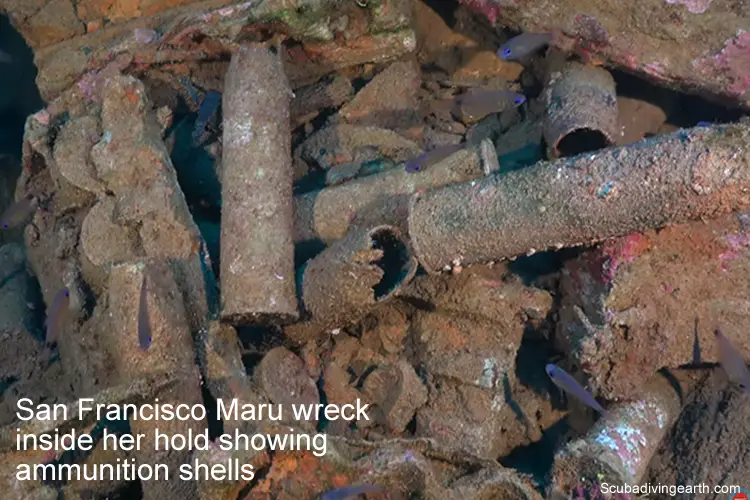
Scuba diving Truk Lagoon as a technical diver
As a technical diver, Truk Lagoon becomes a scuba diving Mecca! Even those wrecks that are in water of less that 40 metres (131 feet) deep, these are also great to scuba dive too.
But due to their depths at 30 metres plus (100 feet plus), in order to spend a reasonable amount of time on them, it’s ideally better to dive on decompression stop dives. By doing so your bottom time is extended. Therefore you have more time exploring the wrecks sitting in Truk Lagoon (Formerly Chuuk Lagoon).
Of course as an experienced tech diver, working out decompression stops, calculating the amount of air needed for the dive and spending time decompressing is all part of your diver experience and training.
But it’s the dives on the deeper wrecks of Truk Lagoon where the skills of a technical diver really come into play. Wrecks like the San Francisco Maru for example. This wreck is particularly one of the favourites to dive. But this is more about its name more than anything. And particularly for the Americans scuba divers diving Truk Lagoon!
San Francisco Maru wreck bow gun
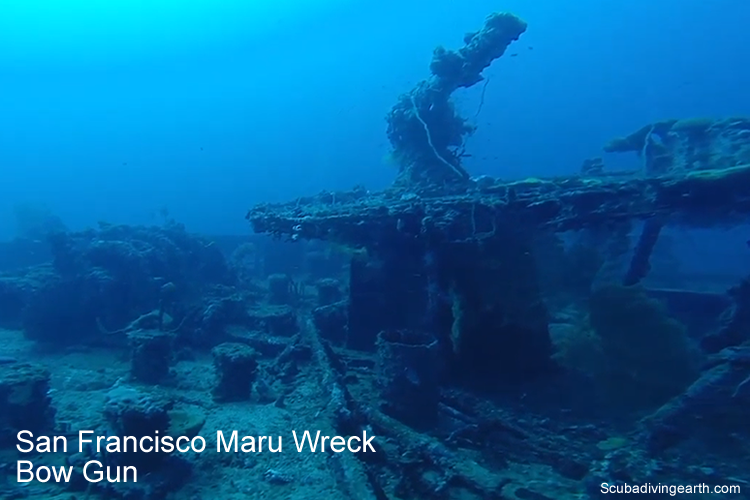
But it is also a great dive, as there are battle tanks on its deck. The holds contain trucks, bomb shells, torpedoes, bullets and many other World War II artefacts. It’s labelled the ‘Million Dollar Wreck‘ because of all its attractions on board.
More Reading: Recovery of the Junkers Jumo 211 (recovery of underwater artifacts)
The starting depth of this ‘great to explore wreck‘ is 42 metres (140 feet). But at its deepest point it’s at a depth of 64 metres (210 feet). This is in true tech diver territory.
- The San Francisco Maru wreck was a passenger cargo ship.
- She measured 117 metres (385 feet).
- She was 5,831 tons and operated in world trade operations in minerals such as coal, bauxite, and phosphate for transportation to the Japanese Empire.
It’s wrecks like the San Francisco Maru dive that give you a true sense of what it was like back on the 18th February 1944. This is when she was sunk during Operation Hailstone. The dive site is good, as the water is mostly clear giving divers a good visibility dive.
To understand more about what happened at Truk Lagoon and it’s name change to Chuuk Lagoon, please take a read of this article about what happened at Truk Lagoon in 1944.
Video of the Truk Lagoon deep wrecks
The video below includes many of the deep wrecks of Truk Lagoon. The video includes the I-169 Submarine wreck.
Whilst this wreck’s deepest point is 43 metres (143 feet), I didn’t include it in this article. My thought behind this is that a recreational diver could dive the I-169. But if they do so they should limit their dive depth to just above 40 metres. That is, stay above the sea bed by 2-3 metres (6-10 feet).
The max depth of the dive shown on this video is actually 139 feet (42 metres), so you could argue it falls within this article.
The same applies to the Momokawa Maru. This wreck lies in a similar depth of water. But you’ll see that the max depth in the video was 130 feet (39.6 metres) for this dive. This keeps it within the recreational dive limit.
Don’t be under any illusions about the depth of these wrecks. I don’t under estimate dive depths to 30 metres and beyond, especially when decompression stop diving is involved. For dives of these depths the risks of decompression sickness increase.
The two wrecks featured in this video, i.e. the I-169 and the Momokawa Maru, are still in deep water.
Diving the I-169 submarine and the Hoki, Nippo, Seiko, Momokawa, San Francisco and Aikoko Marus in January
I hope you enjoyed this article about Truk Lagoon deep wrecks
I’d love to hear from you. Tell us about your adventures of diving and snorkeling, in the comments below. Please also share your photos. Either from your underwater cameras or videos from your waterproof Gopro’s!
If this article hasn’t answered all of your questions. If you have more questions either about snorkeling or scuba diving (or specifically about Truk Lagoon deep wrecks), please comment below with your questions.
There will also be many more articles about scuba diving (and snorkeling) for you to read and learn about these fabulous sports.
Have fun and be safe!

